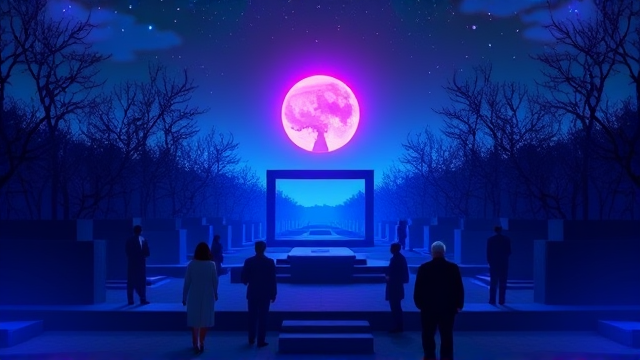Japanese mayors invite Trump to visit atomic bomb sites.
In a move laden with profound historical symbolism, the mayors of Hiroshima and Nagasaki have formally extended an invitation to US President Donald Trump to visit their cities during his forthcoming trip to Japan. This is far more than a routine diplomatic gesture; it is a stark, moral appeal for a sitting American leader to confront, first-hand, the catastrophic human consequences of nuclear warfare.The political calculus, as seasoned observers are quick to note, renders such a visit highly improbable, given the immense domestic risks for any US president seen engaging in what opponents could frame as an 'apology tour. ' Yet, the very act of issuing this invitation illuminates a deepening global anxiety—a palpable fear that the nuclear taboo, a fragile but enduring norm painstakingly constructed over the seven decades since those fateful days in August 1945, is being systematically eroded.The mayors' letter reportedly underscores two converging crises: the alarming resurgence of great-power tensions and the rapidly dwindling population of hibakusha, the atomic bomb survivors who serve as the living, breathing conscience of the nuclear age. Their voices, which have for generations offered firsthand testimony to the unique horror of nuclear weapons, are being silenced by time, just as the world appears to be forgetting the lessons they fought to impart.This appeal must be understood within the broader context of a disintegrating international arms control architecture. The collapse of the Intermediate-Range Nuclear Forces (INF) Treaty, the precarious state of New START, and the modernization of nuclear arsenals by all major powers, including the United States, Russia, and China, have collectively dismantled the guardrails that once helped prevent a return to the brinkmanship of the Cold War.President Trump's own administration has been a central actor in this drama, withdrawing from the Iran nuclear deal and engaging in volatile rhetoric with North Korea's Kim Jong-un, at once threatening 'fire and fury' and then embarking on unprecedented, if ultimately unproductive, summits. This diplomatic whiplash creates a global environment of profound uncertainty, where the unthinkable begins to feel plausible.To walk through the Peace Memorial Museum in Hiroshima is to be confronted not with abstract concepts of megatonnage, but with the ghostly shadows of victims etched into stone, the melted trinkets and twisted steel that bear silent witness to a sun brought to Earth. A presidential visit to such a site would be an event of Churchillian gravity, a moment to reflect on the immense responsibilities of command and the somber legacy that leaders inherit.History offers few direct parallels, but one might recall President Eisenhower's 'Atoms for Peace' address, which sought to steer nuclear technology toward constructive ends, or President Reagan's eventual pivot from calling the Soviet Union an 'evil empire' to forging significant arms reduction agreements with Gorbachev, a transformation partly born from a shared understanding of nuclear Armageddon. The question now is whether the current geopolitical climate allows for such a reflective pivot.The strategic rationale for a leader to avoid this symbolic weight is clear; it could be portrayed as a sign of weakness or an unnecessary entanglement in historical grievances. However, the strategic rationale for accepting is arguably greater.In an era where tactical nuclear weapons are becoming smaller and the threshold for their use is arguably lowering, a powerful, visual reaffirmation of the horrors of nuclear conflict could serve as a crucial deterrent, a necessary shock to the system. The invitation from the Japanese mayors is therefore not merely a request for a photo opportunity; it is a test of the global community's collective memory and its commitment to ensuring that the names Hiroshima and Nagasaki remain historical warnings, not prologues to a future chapter.
Latest News
In a calculated maneuver that political risk analysts will be studying for its strategic implications, Hong Kong's administration has deployed its most trusted
2 minutes ago0 comments
The persistent specter of global hunger, a crisis of both moral failing and systemic collapse, continues to mock the grandiloquent pledges made within the
7 minutes ago0 comments
The sterile, fluorescent-lit corridors of Tel Aviv’s Ichilov Hospital, a place more accustomed to the routine rhythms of illness and recovery, became the stage
17 minutes ago0 comments
In a development that resonates with the careful calibrations of political power observed throughout modern history, Hu Xijin, the former editor-in-chief of
47 minutes ago0 comments
The fatal attack on a Kenyan police officer at the main gate of the president's official residence in Nairobi has sent immediate and chilling shockwaves
2 hours ago1 comments
The political landscape of Madagascar has been plunged into a state of high-risk uncertainty following the sudden and clandestine departure of President Andry
3 hours ago2 comments
The political theater unfolding for Donald Trump presents a study in stark duality, a phenomenon not entirely without precedent in the annals of American
3 hours ago1 comments
The political theater gripping Malaysia's opposition party Bersatu has escalated into a full-blown purge, with the Tuesday sacking of a sitting MP and four
3 hours ago0 comments
It’s quiet here...Start the conversation by leaving the first comment.
